
South Carolina deer hunters can take a chance on three excellent draw-hunt opportunities.
Deer are creatures of habit.At least that was the hunter’s hope, sitting in his stand overlooking three red oaks off a bicycle trail that crossed Fairforest Creek.
It was the first morning on one of the annual deer hunt held at Croft Natural Area in Spartanburg County. The week before, after checking out a likely looking area spotted on a topo map, he had eased down a bicycle trail on foot, hoping to get a glimpse of the hardwood stand.
Three does and a buck that he couldn’t quite make out came off the ridge while he was still 100 yards off. Turning on his heel, the hunter back-tracked to his truck.
There’s no better sign than live deer.
Now, watching the sunlight filter through the trees, he watched the first deer file up the trail, followed by three more. The group began browsing around the red oaks, angling downwind toward the hunter. Barely moving, the archer clipped his release to the string of his compound bow and began taking deep breaths, trying to slow the beating of his heart.
In 1997, a joint effort between the S.C. Department of Parks, Recreation and Tourism (SCPRT) and the S.C. Department of Natural Resources (SCDNR) began a program that opened the Croft State Natural Area to deer hunting through a lottery drawing. The area was donated to the state after operations closed down at Camp Croft, which occupied the land.
A series of four 2-day hunts are held annually, with hunters allowed to apply for archery-only hunts. Except for a 3-year interruption to make sure there was no unexploded ordinance on the property from its World War II days as a training camp, the hunts have been held, under stipulations that the area be hunted only with standard archery equipment, and that digging into the ground or installation of tree stands be prohibited. Regulations were amended to allow crossbow hunting during primitive-weapons seasons in 2005.
The result is a win-win opportunity for hunters on unpressured state-park property. At the same time, park managers get a way to keep their deer populations in check and keep vehicle-deer collisions to a minimum.
“The Croft hunts provide both a unique hunting experience for area deer hunters as well as a service to the SCPRT,” said Gerald Moore, an SCDNR biologist. “The Croft area provides hunters over 7,000 acres of beautiful land, comprised of hardwood ridges and creek bottoms … easily accessed by a series of bicycle trails. In return, the hunters help manage the deer herd, which is plentiful all across the area.”
Initially, hunters who applied thought that since the Croft area had not been hunted, it would be a hot spot for trophy deer. While several nice bucks were taken the first couple of years, the SCDNR struggled with achieving the hunts’ objectives of managing the deer herd.
“Hunters were passing up antlerless deer and smaller bucks looking for a big trophy deer and subsequently weren’t harvesting the numbers of deer we needed,” Moore said.
As an incentive to harvest antlerless deer, hunt managers gave hunters who took antlerless deer a reward: a guaranteed spot in the next year’s hunt without having to go through the selection process.
The Croft hunt draws applicants from across South Carolina and neighboring states. Because the area is a state park, scouting is permitted any time the park is open. While this is a benefit for local hunters who are drawn, out-of-town hunters typically only arrive a day or less before hunting. To assist those hunters, Doug Goins, who runs the bow shop at the Southern Sportsman in Inman, has some advice for quickly finding good spots on unfamiliar land.
“First, I’d obtain an aerial photo of the land I intended to hunt,” Goins said. “I want to see how the land lays. I’m looking for draws — bedding areas and feeding areas. Then I want to find travel corridors that run between these two locations. Once I’ve marked likely bedding, feeding and travel routes on the map, I’m going to look for choke points. These are fingers of trees or funnel areas where I can put a stand and know the deer will have to walk (past) traveling from one area to the other.”
Goins can eliminate a lot of land and gain useful information from map scouting. He says the key is to “be the deer” and look at the land the way a deer would. Once that’s done, he wants to get into the area to verify what he’s found and get out without alerting any of the local deer to his visit.
“The worst thing you can do to an area you want to hunt is stomp the woods up,” said Goins, a Mathews pro. “On the day I’m going to field-scout, I want to find the most direct route to walk to that area with the wind in my face, even if it means taking the long way around the property. I’ll walk directly to that area, find what I need to find — including a good tree to climb — then turn and walk directly out the way I came.”
Goins has two more pieces of advice that may run contrary to the thinking of some hunters. Both have to do with approaching his stand on the day of the hunt. He said that few hunters pay attention to the scent they bring to their stands and that too many hunters give away their presence by their approach.
“I always walk to my stand with the wind in my face,” he said. “The other thing is, I want to place my stand, based on my map studies and field scouting, so the deer will always be upwind. Part of this thinking is scent elimination versus using cover scents. I don’t care how ‘natural’ the cover scent is, I don’t want to bring any scent to my stand site. That’s why I concentrate on eliminating scent instead of covering it up, and there are some good products on the market made to take away any scent I might bring with me.”
Croft State Natural Area
The Croft hunt was organized as an archery-only hunt to reduce impact on the outside communities. The park is divided into hunt areas A,B, C, and D. On their application, hunters must select the area they would like to hunt on a particular date or check the box that indicates they are willing to hunt any area on any date.
Hunters are allowed to hunt anywhere within the boundaries of the zone for which they are drawn. Only portable stands are allowed and can be hung prior to the hunt but must be removed after the end of the hunt period.
Applications will be available July 1, and the application deadline is August 22.
The hunts start in September and are separated by two weeks, with the final hunt in early November.
Pinckney Island NWR
Located between Bluffton and Hilton Head Island, Pinckney Island National Wildlife Refuge is the only one of seven national refuges administered by the Savannah Coastal Refuge Complex that’s in South Carolina.
With the growing development in both Bluffton and Hilton Head, many of the existing deer herds from those areas have been pushed over to Pinckney Island, and managed hunting is the primary way biologists can control the deer herd on the refuge.
Public hunting on Pinckney Island National Wildlife Refuge is permitted on approximately 1,050 acres. Certain areas are closed to hunting, and no access to the area is permitted by boat.
This season’s hunt is scheduled for Nov. 14. Hunters are limited to shotguns. They are allowed to use portable deer stands that can be placed less than a week before the hunt starts; loss or damage of the portable stand is the responsibility of the hunter.
Federal permits are required for all hunts and must be carried on the person while hunting. All hunters must obtain a permit, regardless of age. Only hunt participants with proper licenses and permits will be allowed on the refuge during the hunt. Hunters 15 years of age or under (youth hunters) must have successfully passed a state-approved, hunter-education course in order to participate in the refuge hunt. Youth hunters must be supervised by an adult 21 years of age or older and must remain in sight and normal voice contact with the adult. The adult may supervise only one youth.
Savannah River Site
The U.S. Department of Energy conducts hunts on the Savannah River Site near Aiken every year. The hunts are dog drives and are well organized by the facility. The site covers more than 150,000 acres.
Hunts will be held on Wednesdays and Saturdays, starting in October and lasting through December. Hunters are selected through a lottery drawing. Hunters who apply must agree to the terms and conditions of the hunt. Applications must be mailed or faxed to the SRS site before the application deadline (See Destination Information). If your application is selected, you will be notified by mail.
If selected, hunters will report to the Deer Hunt Building at the specified date and time. All weapons and gear will be inspected at sign-in point. A safety briefing is conducted before each morning’s hunt, after which hunters will be transported to their assigned stands. Dogs are released from designated areas. Hunts usually last three to four hours. All harvested animals must be tagged and brought to the check station, where biologists test the animals for substance residue. Harvested deer are field dressed and placed into a refrigerated truck and can be picked up after the hunts.
Safety is a major priority at Savannah River Site, and safety auditors are placed throughout the hunting area to ensure safe hunting guidelines are followed. SRS has a “Zero Tolerance” policy for unsafe hunters.

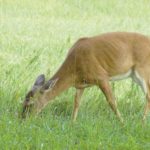
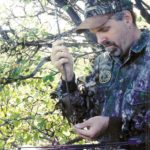
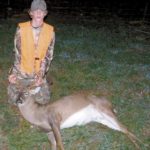
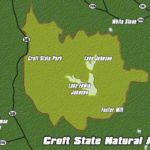
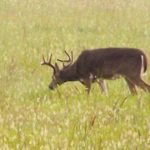
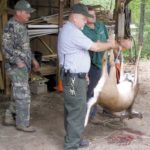
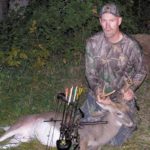
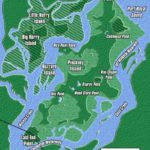



Be the first to comment